Suffolk Day: Nine things that make the 'curious county' stand out
- Published
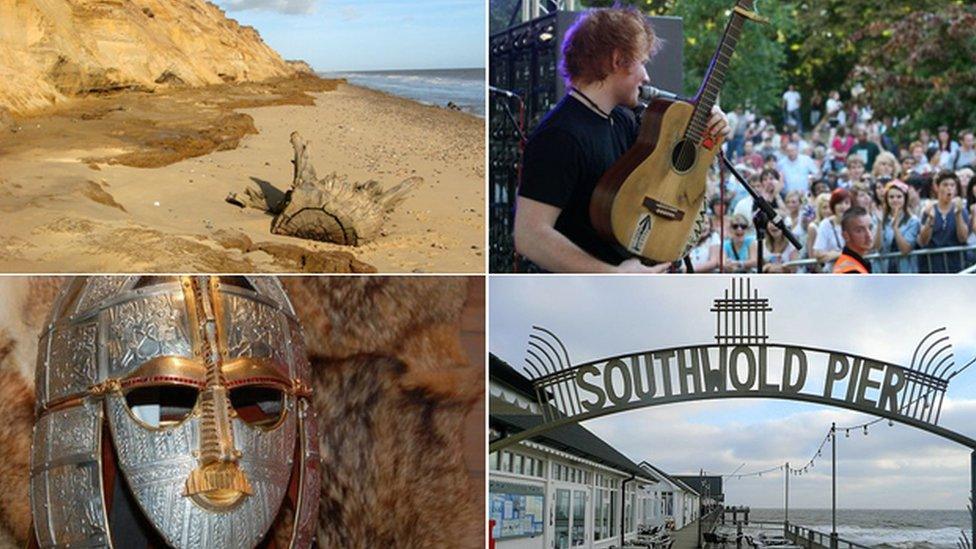
Beaches, treasure, piers and Ed Sheeran: The things that make Suffolk great
On the first annual Suffolk Day, the county is being celebrated through the length and breadth of its rolling fields, coastal retreats and busy town centre streets.
Once branded the "curious county" during a short-lived ad campaign, Suffolk is famed for arts luminaries including John Constable, Thomas Gainsborough, Benjamin Britten and latterly Ed Sheeran, but has much more to boast about.
Here are nine things that make Suffolk stand out:
1. From George Orwell to Ed Sheeran

Writer George Orwell is remembered with a mural in Southwold, where he had a house
The fertile farmland and gentle coastlines have produced more than just lovely holiday snaps over the years. The county has been home to a host of well-known faces.
Writer George Orwell, TV presenter Brian Cant, comedian Griff Rhys Jones, broadcaster John Peel, TV cook and writer Delia Smith; actors Bob Hoskins, June Brown and Ralph Fiennes; composer Benjamin Britten, farmer and TV presenter Jimmy Doherty and model Twiggy are just a few of the names to have been born in the county, or have a home there.
Screenwriter and director Richard Curtis reportedly has a fisherman's hut in Walberswick, and musician Brian Eno was born in Woodbridge.
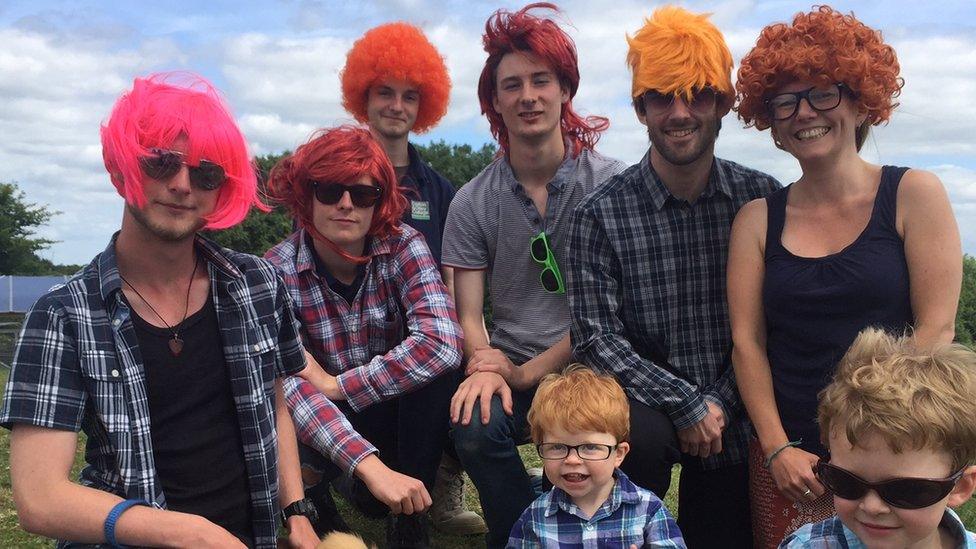
Students at Otley College have marked Suffolk Day by dressing as Ed Sheeran
Elsewhere, Lowestoft is where catsuit-wearing, high-note hitting rocker Justin Hawkins and bandmates formed The Darkness.
And, as we are never shy of saying, singer-songwriter Ed Sheeran hails from Framlingham, and even wrote a song about the town's 12th Century castle.
Speaking of times gone by...
2. Home to a lord chancellor
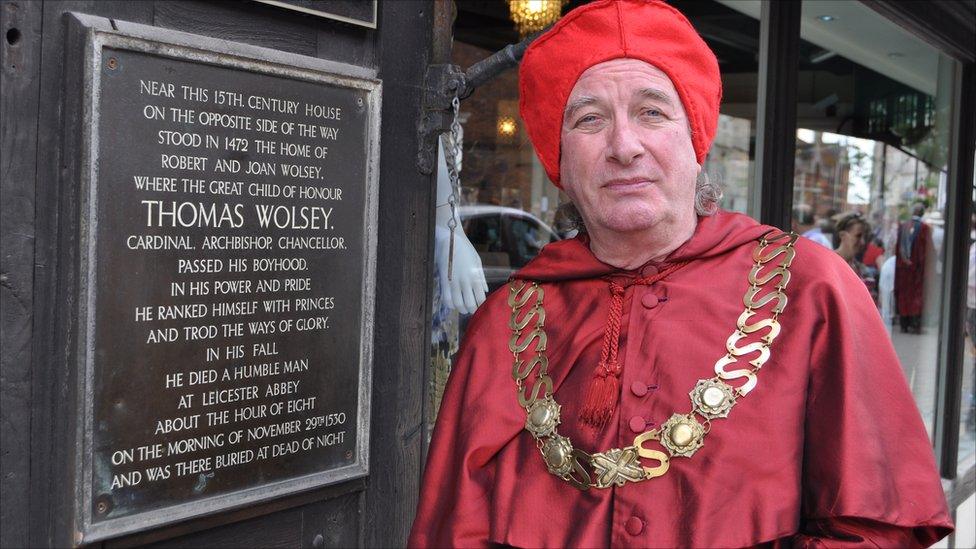
Cardinal Wolsey's statue - and actor Brian Theodore Ralph doing a turn as the churchman
Stroll around Ipswich, you'll find many things are named after one Cardinal Wolsey, born there in about 1475.
There's a street, a theatre - and even a statue in his memory in the town centre, near to where he was believed to have lived.
Thomas Wolsey rose to prominence during the reign of King Henry VIII, becoming the monarch's chaplain.
For almost 15 years, Wolsey reigned supreme as lord chancellor, controlling increasing amounts of state business and building spectacular homes at York Place and Hampton Court.
His downfall came when he failed to get an annulment of Henry's marriage to Catharine of Aragon, and he was arrested and accused of treason in 1530. He died weeks later on his journey to face trial.
Suffolk is also famed for its archaeological finds, with artefacts from the Bronze Age being found around the county, including a significant site near Mildenhall.
It's home to Sutton Hoo, where in 1939 one of the country's most significant archaeological finds was unearthed in a grassy mound. The remains of a ship contained treasures including a sword, a shield, and a warrior's helmet.
3. Made in Suffolk
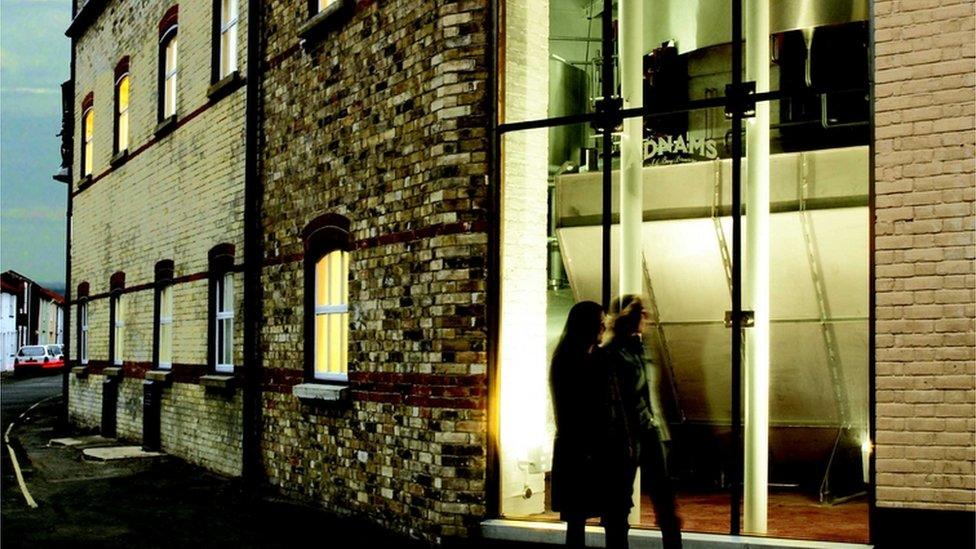
Adnams was founded in 1872 and has been based in Southwold ever since
If you're a fan of chocolate and beer, Suffolk may well produce some of your favourite items.
The Muntons plant in Stowmarket makes the malt for the honeycomb centres of Maltesers. The market town is also home to electrical firm Bosch and a Dulux paint factory.
At a massive plant in Bury St Edmunds, sugar beet is turned into white granulated and baking sugars under the Silver Spoon label.
And two major brewers call Suffolk home: Adnams, based in Southwold, and Greene King, in Bury St Edmunds. Aspall produces cider in a village of the same name, and Copella makes fruit juice at its farm in Boxford.
Radar was developed at Bawdsey Research Station, near Felixstowe, which opened in 1936.
Suffolk is also the first place where lawnmowers were mass-produced. Edwin Beard Budding invented the mower in 1827 and patented it three years later. In 1833, Suffolk firm Ransomes began making Budding mowers under licence.
4. Eastern Promise
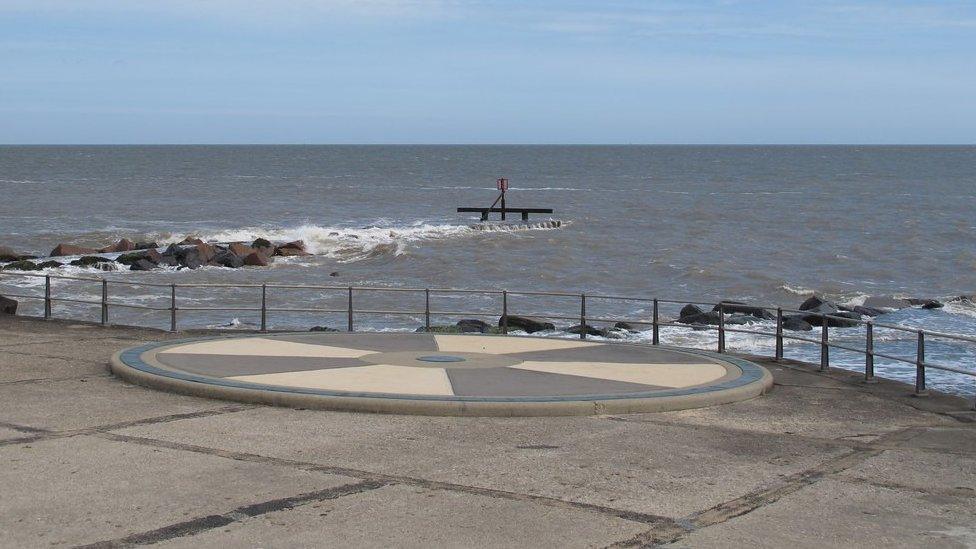
The UK's most easterly point is currently marked only by a stone plaque, and dominated by a wind turbine
Ness Point in Lowestoft is the UK's most easterly point. Also known as Lowestoft Ness, the spot is marked by a circular stone plaque that shows the distance to cities in Europe and Britain's other cardinal points.
Earlier this year, it was announced that it would be getting a £1m makeover, transforming it into a tourist hotspot like Land's End or John O'Groats.
A new visitor centre will celebrate the area's maritime heritage, and new cycle links and footpaths are also planned along with an area dedicated to cultural events such as festivals.
5. Chestnut icon
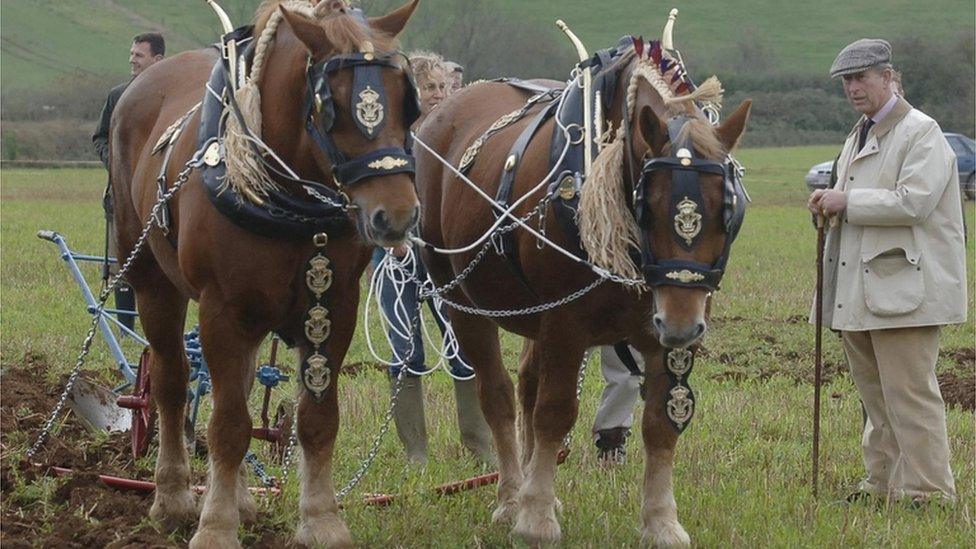
Prince Charles spends time with a pair of Suffolk Punches
The majestic Suffolk Punch horse was developed in the 16th Century for farm work, and gained popularity in the early 20th Century when its powerful frame was useful for pulling ploughs, cutting corn and carrying wheat to the mill.
With their shining chestnut coats, the giant horses are an icon of the county and famed for their good temperament.
The Suffolk Punch Trust was set up to protect the future of the breed - which is endangered - and to "safeguard Suffolk's unique rural history by conserving native plants and animal breeds", while the Suffolk Horse Society - set up in 1877 - defines the breed standard and maintains the pedigrees of the UK population.
6. The King of East Anglia
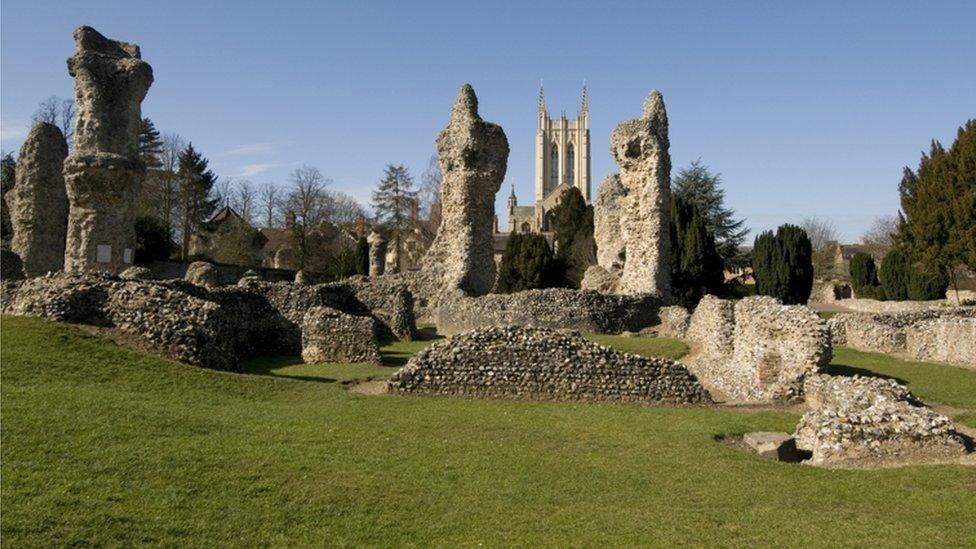
The remains of Bury St Edmunds abbey, where Edmund the Martyr's remains were once buried
Edmund the Martyr, commonly known as St Edmund, was King of East Anglia long before the Norman conquest.
He died in November 869. According to legend, he refused to share power with what he regarded as heathen non-Christians and was tied to a tree, shot with arrows and beheaded.
His remains were taken to what became Bury St Edmunds before the abbey was established there in the 11th Century. The shrine eventually built there became one of the most famous pilgrimage locations in England.
The bones disappeared during the Dissolution of the Monasteries by Henry VIII in 1539 when the abbey was largely destroyed and the shrine defaced.
There have been calls for St Edmund to take St George's place as patron saint of England.
7. Constable and Gainsborough
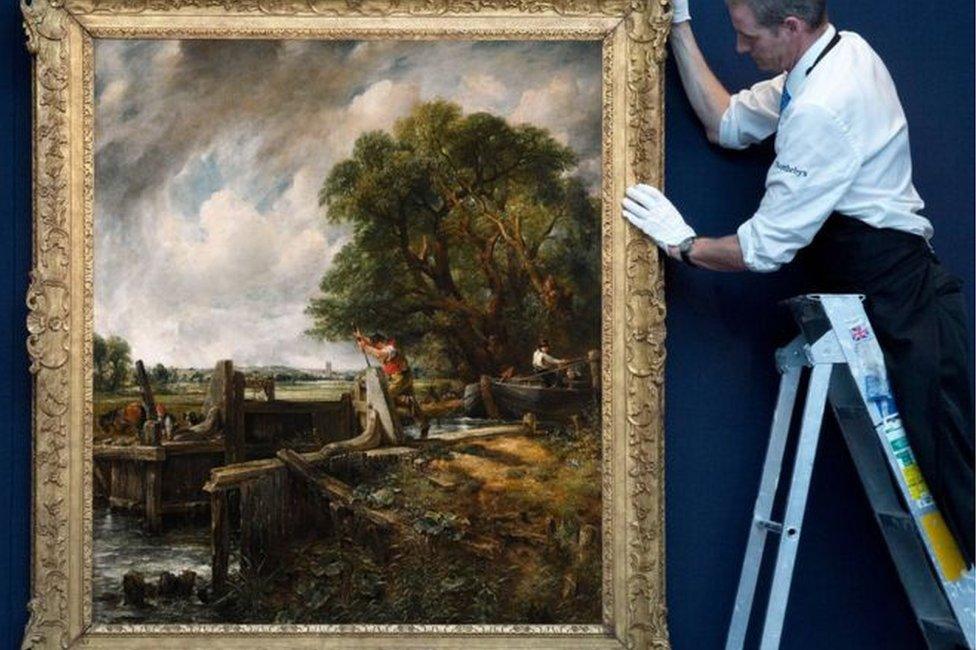
John Constable's "The Lock" was one of hundreds of paintings the Suffolk-born artist created in his lifetime
Two of Britain's greatest painters were born within 10 miles of each other - albeit 50 years apart - in Suffolk.
Thomas Gainsborough, of Sudbury, loved to paint landscapes even though they were unfashionable at the time. Born in 1727, he created new demand for landscapes by founding the realist tradition, in contrast to the imaginary landscape scenes of other contemporary painters. He also painted more than 500 portraits of the English aristocracy of the time.
Born in 1776, and working from his family home in East Bergholt, he painted his surroundings across Dedham Vale and went to the Royal Academy in 1799. He became one of the most famous landscape artists of the 19th Century, and his paintings are still admired worldwide.
Christchurch Mansion in Ipswich holds the largest collection of Constable and Gainsborough's work outside London.
8. Grandma's creator

Carl Giles' work was published in the Daily Express for many decades
Popular and influential cartoonist Carl Giles (1916-1995) lived and worked in Suffolk for much of his life.
His most famous creation, Grandma, is immortalised with a statue in Ipswich town centre, where she stands looking up at his former office window.
After working as a war correspondent during World War Two, Giles went on to produce several cartoons a week for the Daily Express and Sunday Express, and annuals of his work were produced from 1946 onwards.
The Royal Family were said to be fans of his work, and he was awarded an OBE in 1959.
9. You've got me singing the blues
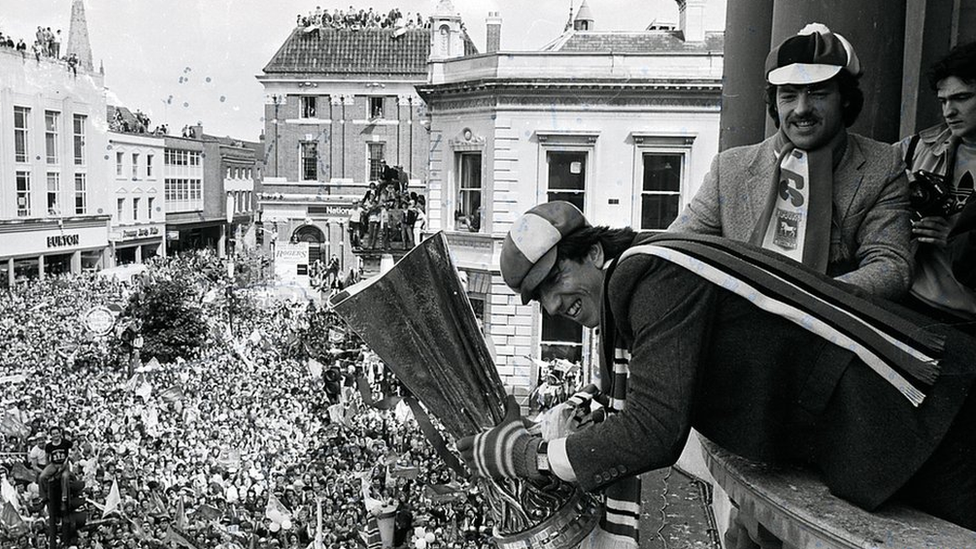
Ipswich Town Football Club lists the league title in 1962, the FA Cup in 1978 and the Uefa Cup in 1981 among its honours
Ipswich Town Football Club, it's fair to say, has long punched above its weight.
As well as producing England's two most successful football managers - Sir Alf Ramsey and Sir Bobby Robson - the Suffolk team also won the Football League in 1962, the FA Cup in 1978 and the Uefa Cup in 1981.
John Cobbold, chairman during Sir Alf and Sir Bobby's reign, once famously said: "There is no crisis at Ipswich until the white wine runs out in the boardroom."
- Published21 June 2017

- Published3 April 2017
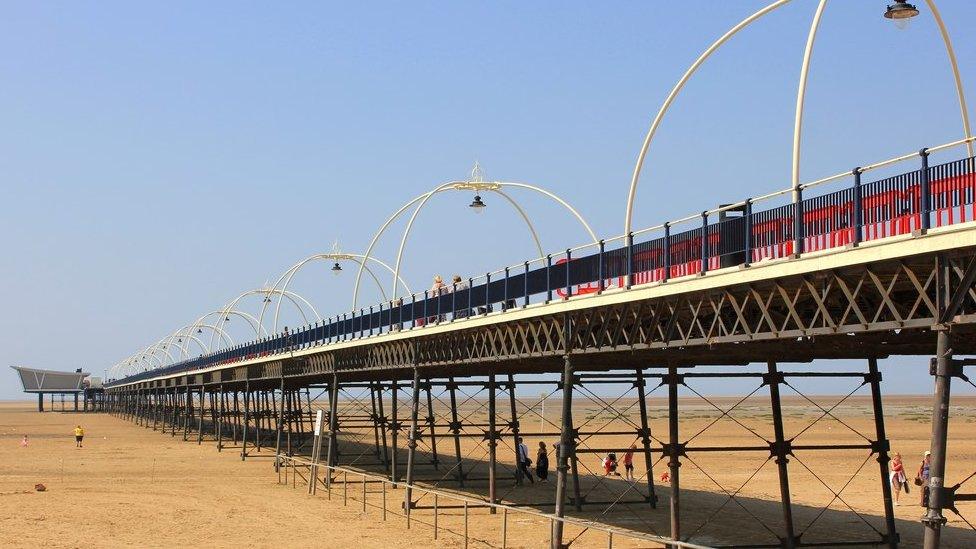
- Published6 July 2013

- Published4 June 2013
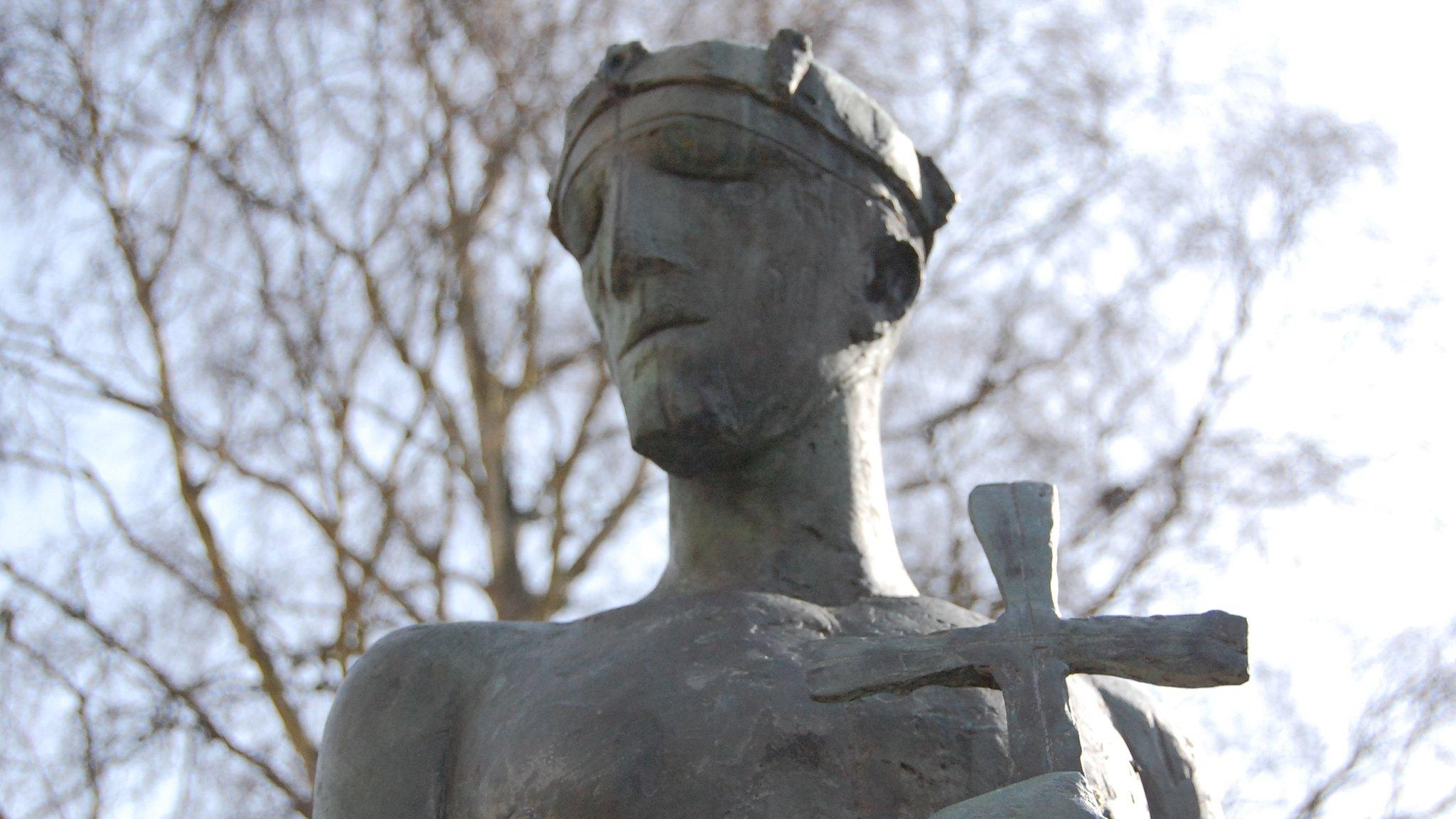
- Published4 October 2013